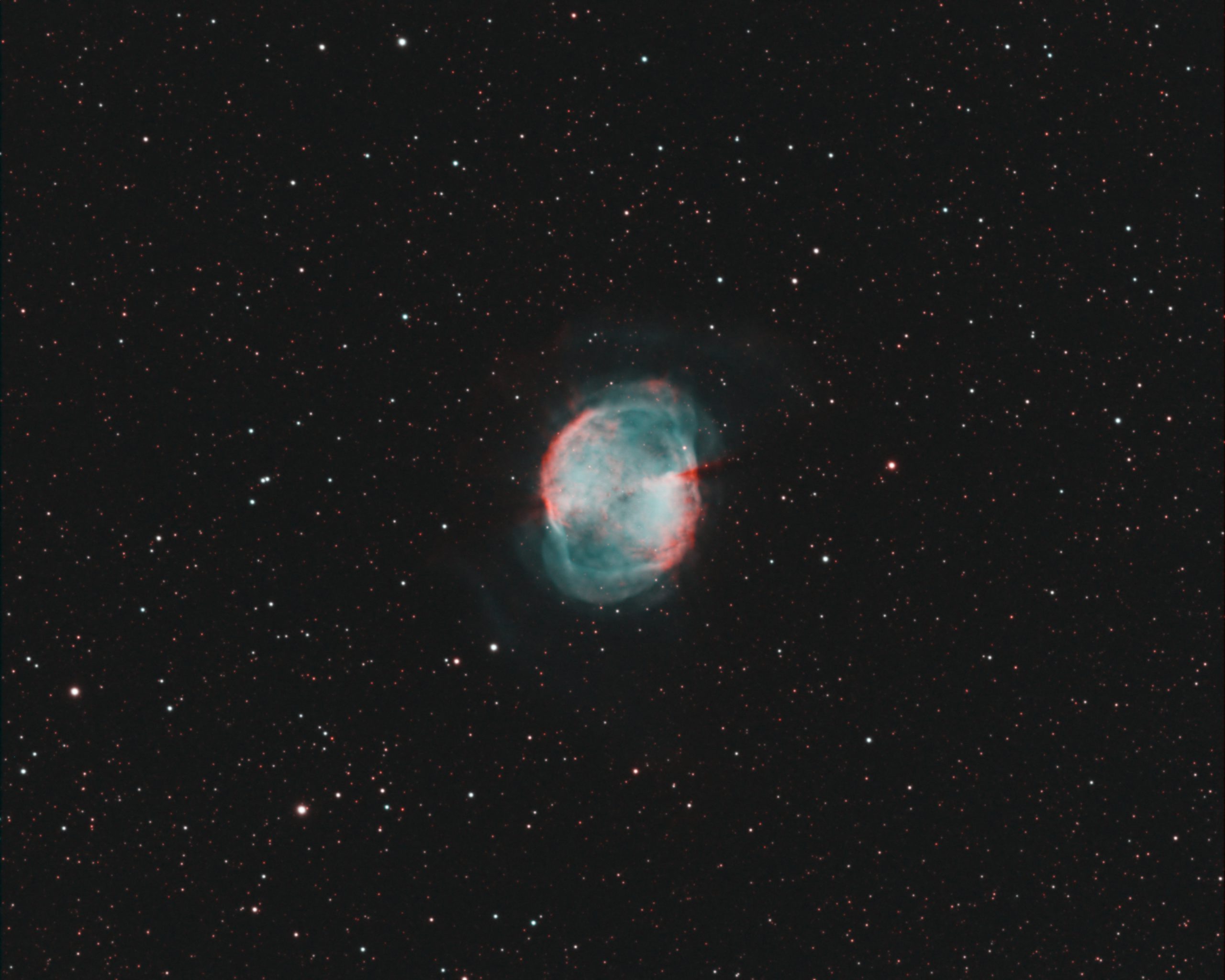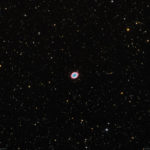M27 is a famous planetary nebula in the constellation of Vulpecula, The Fox. Despite its name, it has nothing whatever to do with planets, it is instead the remnants of a dying star that has cast off its outer atmosphere when nuclear reaction can no longer sustain it. Our Sun will look like this in five billion years from afar.
M27 is a fine object to view through a telescope. I have also imaged M27 several times over the years. Here for example.
The rendition on this page shows M27 in the HOO or Hydrogen-Oxygen-Oxygen palette which maps the Ha channel to Red and green and Blue to OIII (Oxygen 3). Planetary nebula are rich in Oxygen since it is one of the elements synthesised in the nuclear fusion processes as the star dies.
Image Technical Data
Imaged from my backyard observatory in Nottingham, UK, August 2019. I used my TEC 140 refractor and Atik 460 CCD camera and Astrodon HA (3nm) and OIII (3nm) filters – very expensive filters too! This was all mounted on my MESU 200 and guided with my OAG.
All data is binned 1×1:
Ha > 18 x 300s ; OIII > 12 x 300s
This is quite a short integration but the result is quite nice I think. This is largely down to the utterly superb Astrodon filters and the extremely tight 3nm emission passband.
I did not blend the data Ha, OIII, OIII >>> one on one to R, G, B Insteads I used the following PixelMath formula:
Red > Ha(i.e. one to one)
Green > (OIII * 0.85) + (Ha * 0.15)
Blue > (OIII * 0.8) + (Ha * 0.2)
Then add them all together to give the colour result. Making only small changes to the formulae can make quite a large difference to the outcome and will emphasis the green, blue or red more depending on which colour formula you wish to adjust.




Comments are closed.